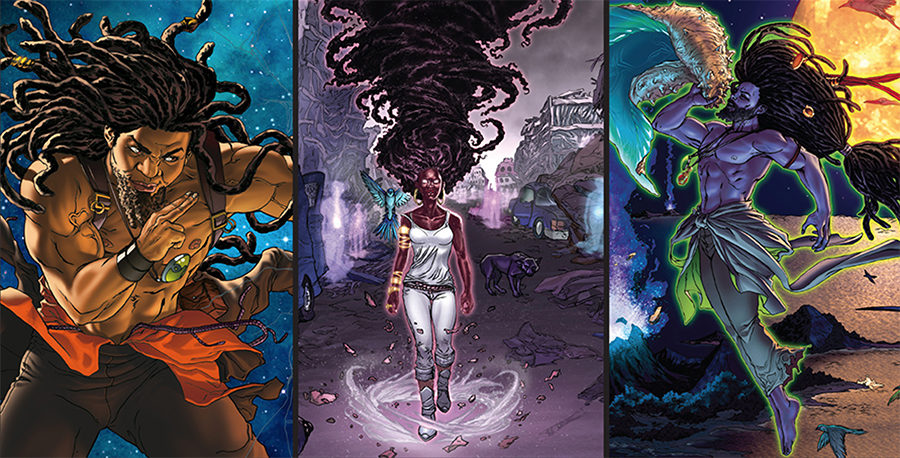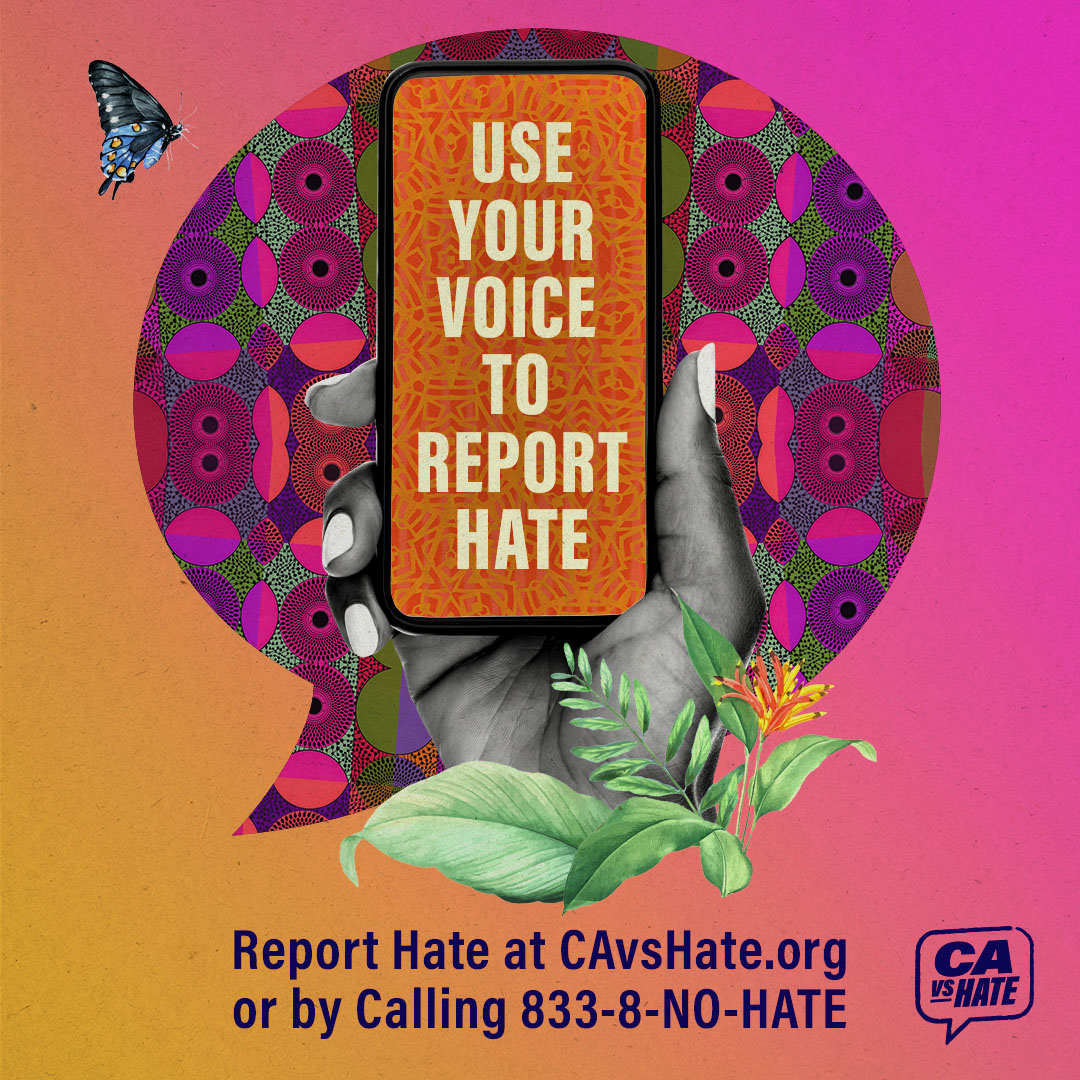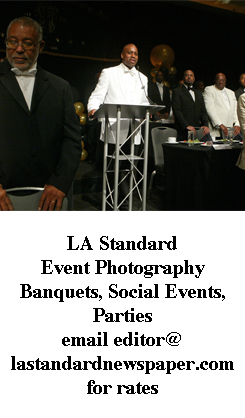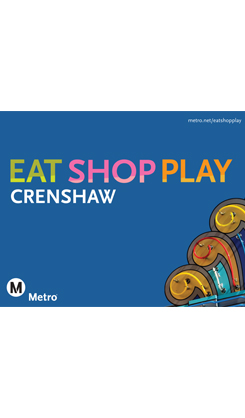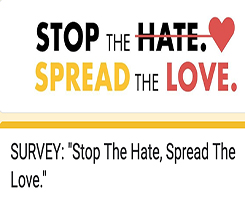CAAMCon celebrated the artistry, history, and power of Black comics, and featured a discussion with “Black Panther” director Ryan Coogler.
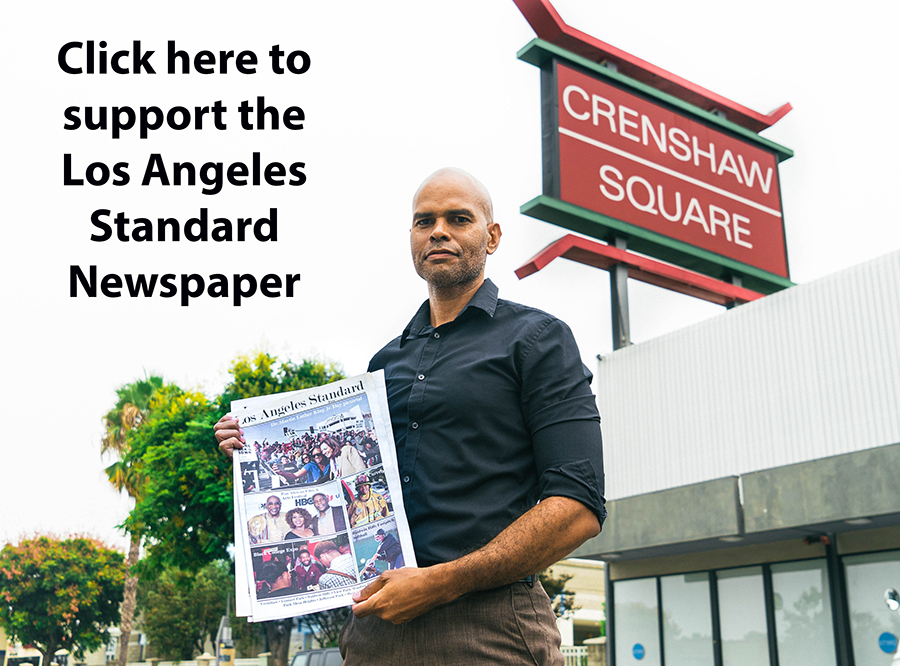
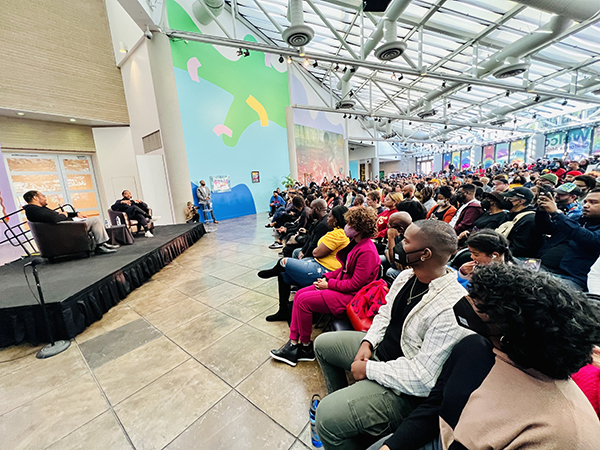
By Jason Lewis
Black comic book creators have been showcasing their artwork and story-telling abilities for several decades. But similarly with many areas of the entertainment industry, Black creators have been underrepresented in the mainstream.
The California African American Museum (CAAM) recently held the CAAMCon Black Comics Festival, an Afrocentric, independent comic book convention. It gave “marginalized creators a space to create work, to fellowship, and to empower themselves both culturally and economically,” said the festival’s cofounder John Jennings, a professor of media and cultural studies at UC Riverside, a New York Times bestselling author, and graphic a novelist.
Jennings is an award-winning comic book creator, and he teaches classes on Afro-futurism, race, politics, comics in contemporary culture, and Black super heroes. He is currently creating a new character for Marvel called Ghost Light. He spoke about the first known foray of comics by and for Black people, which was All-Negro Comics by Black journalist Orrin Cromwell Evans in 1947.
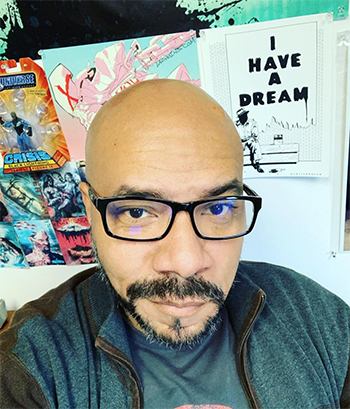
“Orrin C. Evans was kind of the godfather of that,” Jennings said. “There was only one issue put out. History is kind of mirky about it, but he might have not been able to continue production because of some racist practices in the industry. And then for a long time you would only see Black comics in the independent Black-newspapers.”
There was a dearth of Black representation in the comic book industry until the underground comics movement in the 1960s and into the 1970s. That interest became more prominent in the 1990s.
“In the ‘90s with the interest in Black Sci-Fi, Black horror, and Afrocentric ideologies, you see an uptick in an interest in Black comic books,” Jennings said. “With comics like Brotherman, L.A. Phoenix, Sistergirl, Milestone Media, and ANIA Comics; all of these things happened simultaneously in the ‘90s. That kind of fuels some of the first Black comic book conventions.”
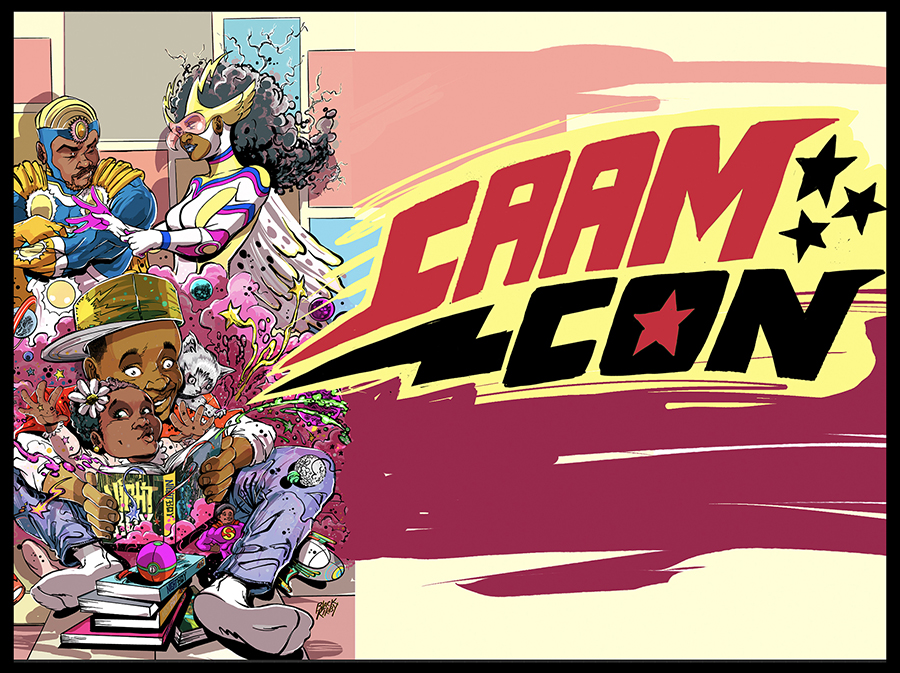
CAAMCon and other yearly Black comic book conventions are attracting large crowds because the comic book industry is accessible to a wider range of people than it was in the past.
“Currently I’d say that there is a Renaissance of Black comic book creation,” Jennings said. "One of the major reasons is that you don’t have to go through a huge publisher to publish your books anymore. When print-on-demand printing started, that opened up the doors and a lot of people started making their own comics. The web just changed everything. And you have the ubiquity of the tools now. Back in the day it would cost you an arm and a leg to buy Photoshop, or an affordable computer that could have the processing power. But now you can have a subscription to the (Adobe) Creative Suite, which is a very powerful creation tool. There are a lot of things that have leveled the playing field.”
Innovation has grown now that the tools to learn how to create comics are easily accessible.
“The quality of the work is what has exploded,” Jennings said. “There are some very talented creators out there who teach themselves by watching YouTube videos. The Information Age has helped push the spectrum of what’s available. Today is the Golden Age of comics done by Black people.”
CAAMCon was a great experience for people in or looking to break into the comic book industry, for the comic book fans, and also for people who do not follow comics closely. For the people in the industry, this was a great networking opportunity.
“One of the things about comic book conventions; yes it’s about fandom and showing support, but this is a business opportunity,” Jennings said. “A lot of people are picked up for publishing. A lot of collaborations start happening in these spaces. So it’s a networking event, and hopefully people can make some money.”
For the comic book fan, this event was a celebration of the history of comics by Black people.
“They were exposed to a lot of comics and characters that they haven’t seen or heard before,” Jennings said. “People who are reading mainstream comics are probably used to a lot of Black characters like The Falcon, War Machine, and John Stewart. These are really well done, and well thought out Black independent characters that are not seen in the mainstream. It’s like a subculture of characters that you probably have never heard of. And it’s a deep culture. I love it when people are introduced to these creators and they’re like, ‘Oh my God, there’s so much out here.’”
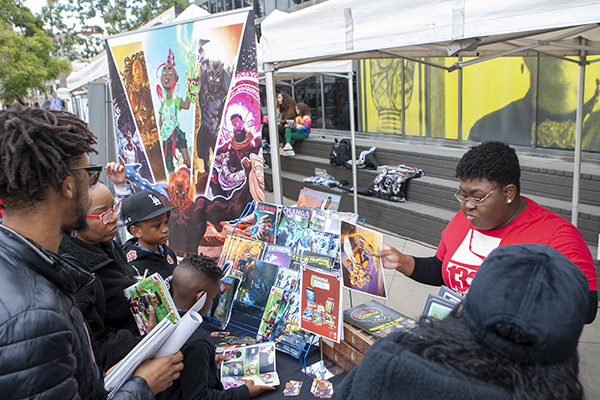
For people who may not be comic book fans but are fans of comic book movies such as “Black Panther,” this festival had a lot of Black culture to offer.
“For people who don’t read comics, this is great if you’re interested in Black culture, Black creativity, or Black literacy, or anything dealing with representation,” Jennings said.
There was a packed audience on hand to hear “Black Panther” director Ryan Coogler speak about his journey into the comic book world, and discuss the creation of “Black Panther.”
For Black children, they were able to see creators and characters who look like them.
“I think that it was eye-opening for them,” Jennings said. “I wish that I could have had an experience like this when I was a kid. To see people who look like me creating comics that are just for me. There’s still a dearth of representation of Black kids and Black folks in these spaces. For this one day, the kids are the default. Everything is about them. Everything is about their future. Everything is about uplifting Black kids, Black families, and Black protagonists. That’s empowering.”


